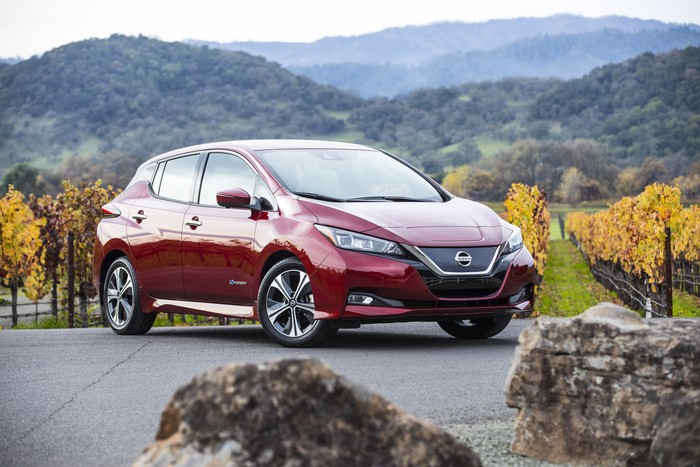
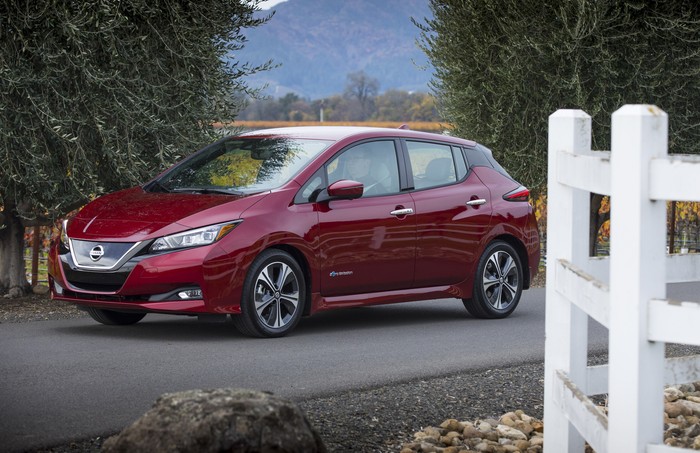
2018 Nissan Leaf
The Nissan Leaf was the first mainstream all-electric vehicle offered in the United States. Now in its second generation, it remains similar to a conventional, gasoline-powered compact hatchback in the sense that it offers a comfortable interior and surprisingly snappy acceleration. It does it all without burning a drop of gasoline, a boon if you're able and willing to live with its relatively limited range.
Overview
Nissan builds the Leaf with a 40-kWh lithium-ion battery pack located under the passenger compartment. It stores enough electricity for up to 150 miles of range. Charging the battery pack takes between eight and 16 hours depending on the hardware used, though the firm notes hooking up the Leaf to the optional quick charger gives it an 80-percent charge in about 40 minutes.
Nissan developed a smartphone application to let owners remotely check their car's battery level. It also provides an estimate of how much time a full charge requires, and the approximate cost of a fill-up at nearby public charging stations.
The electric motor delivers 147 horsepower and 236 pound-feet of torque, and kinetic energy recuperation technology allows for one-pedal driving. Front-wheel drive is the only configuration available.
Comfort and technology
Designers tossed out the outgoing model's digital eyebrow and instead adopted a much cleaner, more conventional design. Inside, everything is where you expect it to be. The driver faces a set of analog gauges that flank a digital information screen. The infotainment screen is on the center console, above the HVAC controls, and the gear selector is in between the two seats.
The cabin offers space for five passengers and up to 23.6 cubic feet of trunk space, a generous figure that places it near the top of its segment. Folding the rear seats down yields 30 cubes.
The Leaf is optionally available with Nissan's ProPilot Assist technology. It's a suite of electronic driving aids that help keep the car in its lane while also controlling accelerating and braking. The system is available between 18 and 62 mph. ProPilot Assist doesn't turn the Leaf into an autonomous car, though.
Standard and optional features
Nissan offers the Leaf in three trim levels called S, SV, and SL, respectively.
The base Leaf comes with a level of equipment you'd expect to find when shopping for an economy hatchback. Notably, the list of standard features includes a 6.6-kilowatt on-board charger. Buyer beware: this unit is not quick-charge capable, and Nissan lists a 7.5-hour charging time when using a 220-volt charger. Buyers who want quick-charging capability need to step up to the SV trim.
S models also come with a foot-operated parking brake, cruise control, Bluetooth connectivity, a three-spoke multi-function steering wheel, 16-inch steel wheels with plastic hubcaps, power-operated door mirrors, automatic halogen headlights, LED tail lights, a rear spoiler, manually-adjustable front seats, bio suede upholstery, 60/40-split folding rear seats, an AM/FM/CD stereo with four speakers, a five-inch color LCD display, a push-button ignition, and automatic A/C.
Buyers can choose from several option packages, including some that bundle niceties included in the top trim level and add it to the entry-level model.
Occupant safety
Every Leaf comes with dual front, side, and curtain airbags in addition to traction and stability control systems. Nissan also includes automatic emergency braking. Other driving aids (including blind spot warning and intelligent lane intervention) are optional on mid-range models and standard on the range-topping trim level.
Key competitors
The Nissan Leaf's main rival is the Kia Soul EV. Its 150-mile range doesn't earn it the coveted "long range” label, but buyers can nonetheless cross-shop it with the Chevrolet Bolt and the Tesla Model 3. They'll pay considerably more for either model, though.
Those not set on getting an electric car can also look at cheaper, comparably-sized gasoline-powered models like the Volkswagen Golf or even Toyota's Prius.
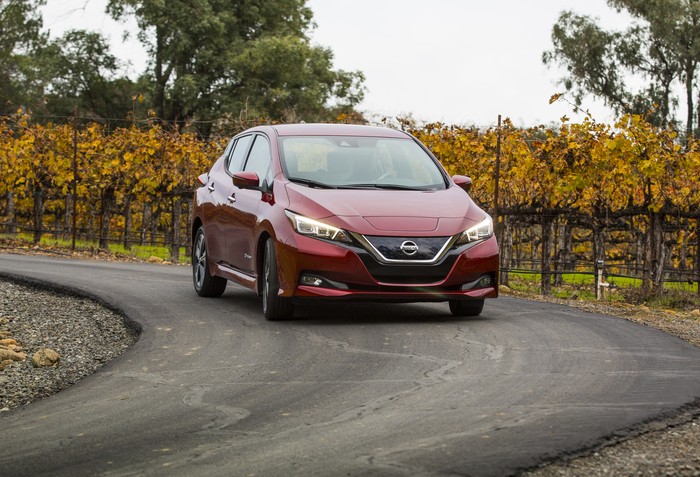
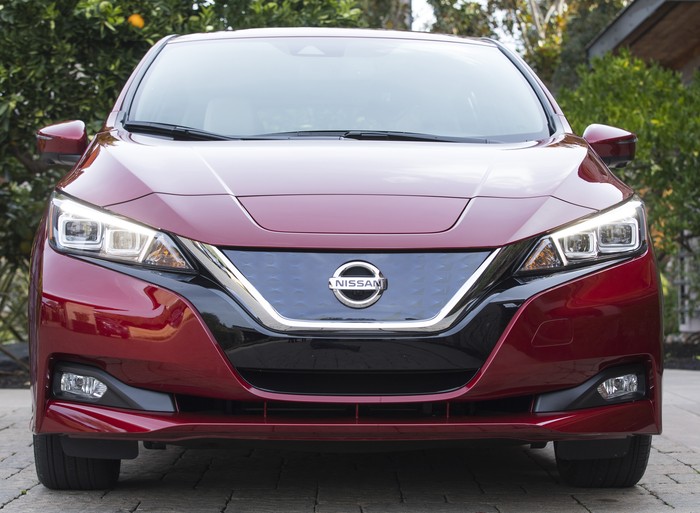
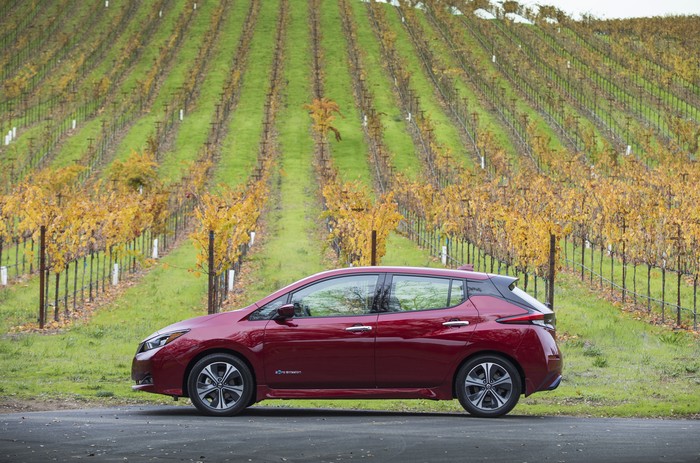
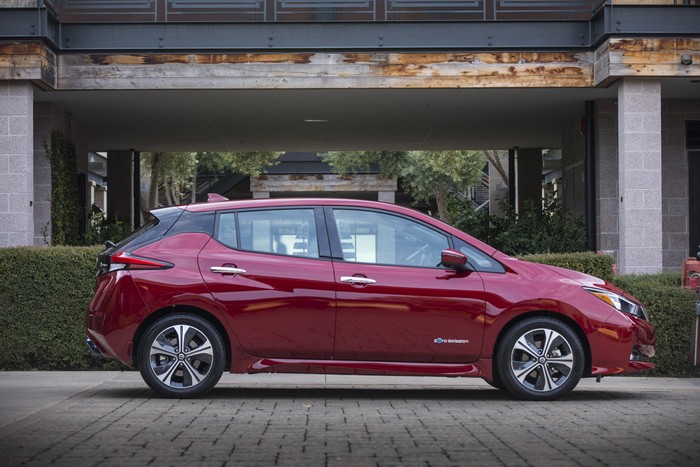
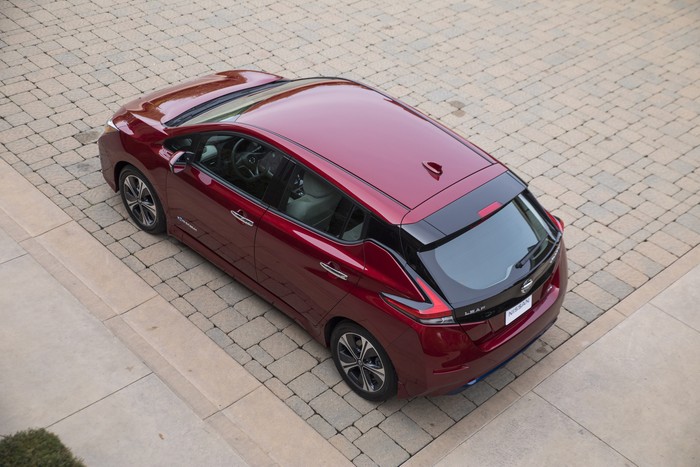
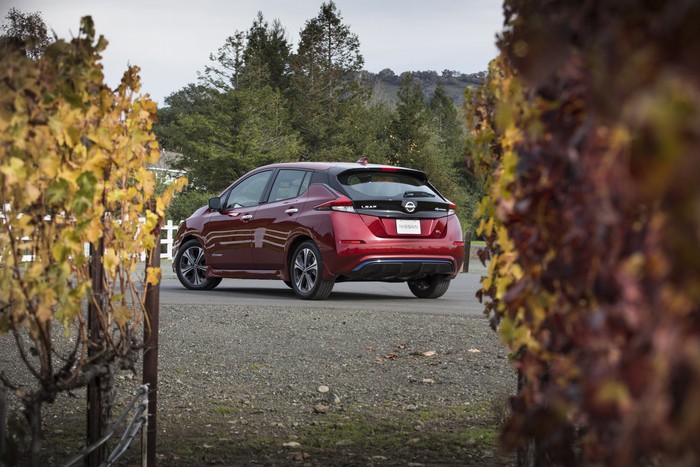
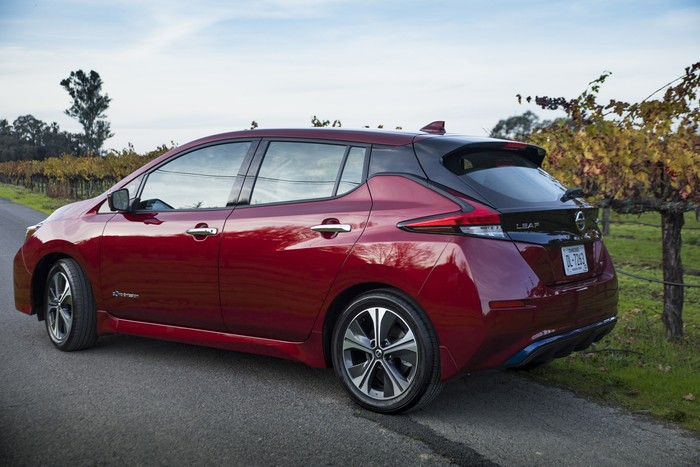
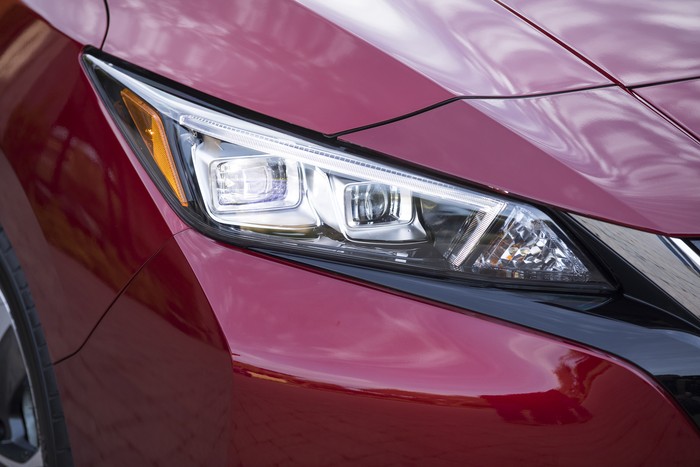
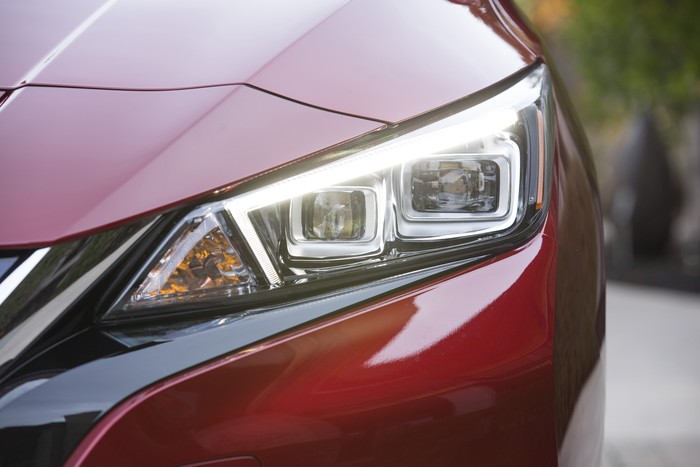
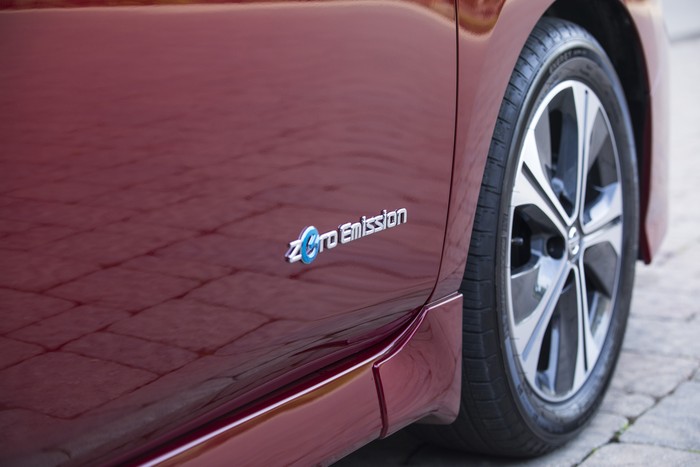
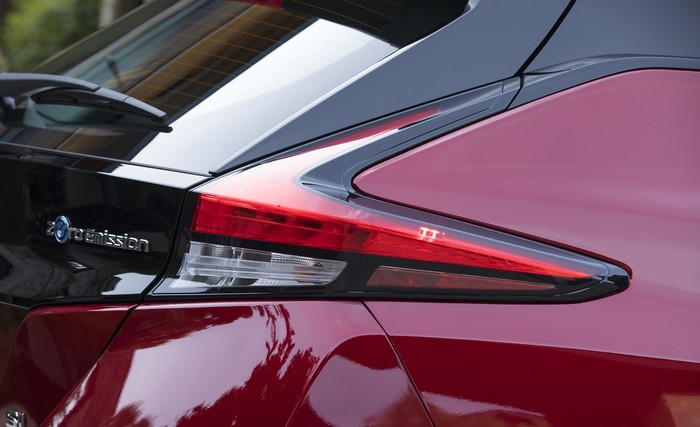
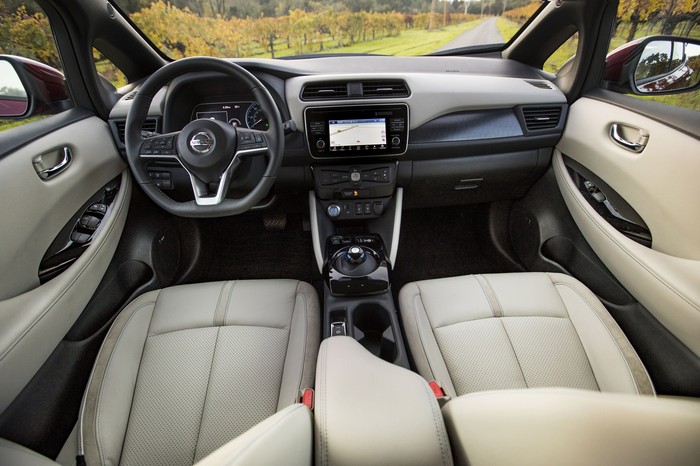
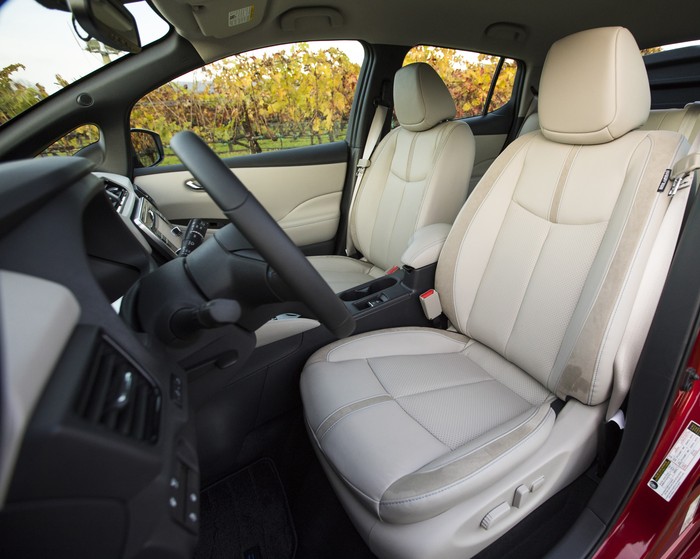

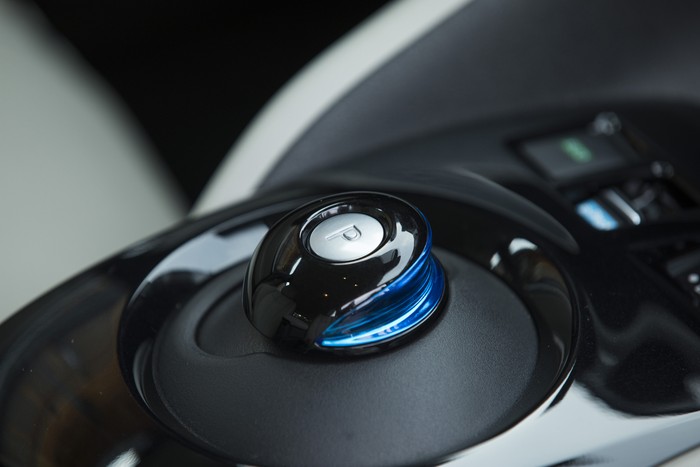
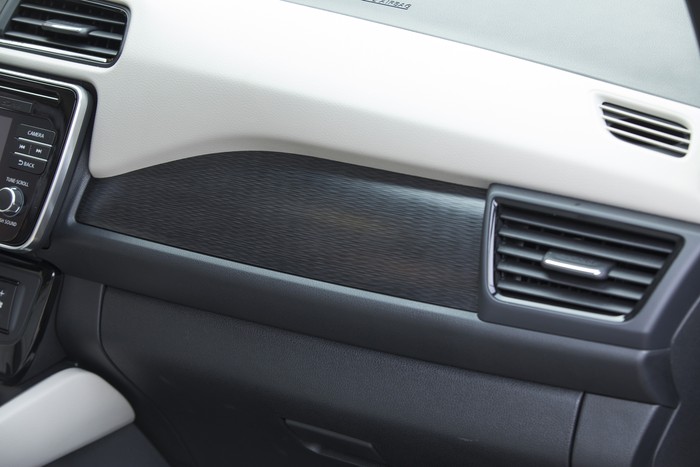
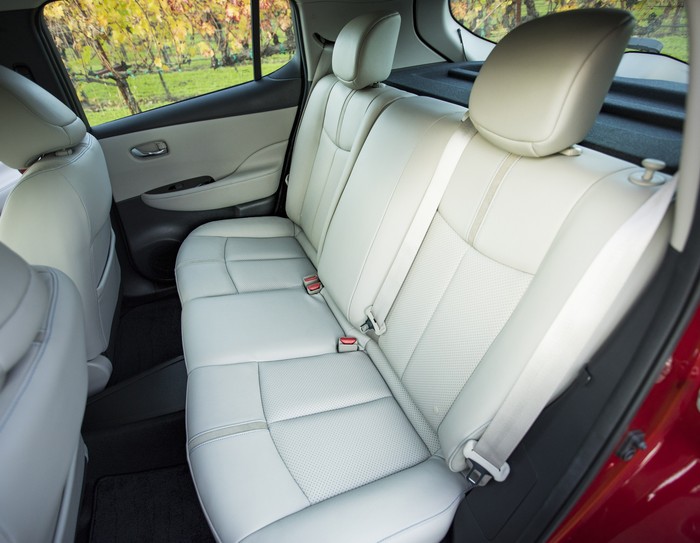
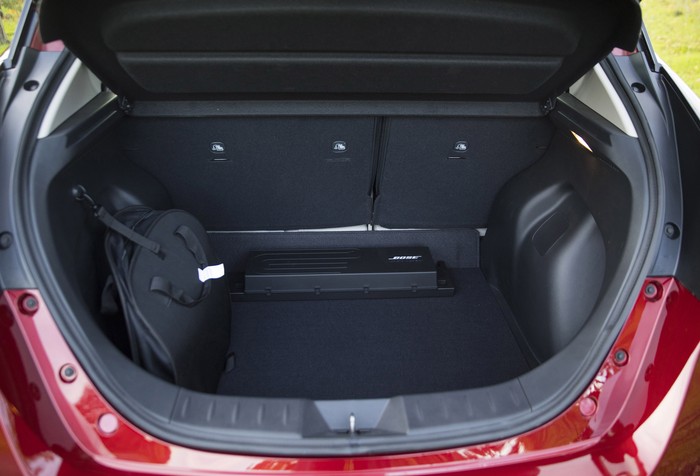
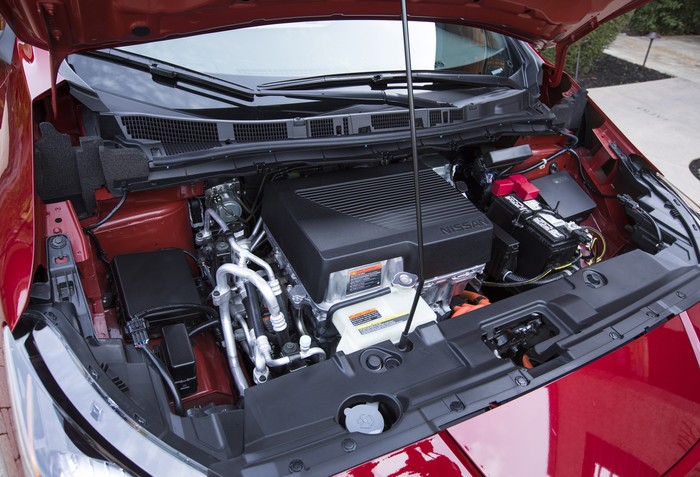
- Propulsion: Electric N/AL
- Power: 107hp
@
N/Arpm - Torque: 187ft⋅lb
@
N/Arpm - Mileage: 112 MPG ( 124 city, 101 hwy)
- Transmission: 1-speed Fixed Ratio
- Seating: 5 seats
in
2 rows - Passenger Volume: 92.4cu ft
- Length: 175.0in
- Wheelbase: 106.3in
- Height: 61.0in
- Weight: 3323lbs
- Cargo Volume: 23.6cu ft
- Front Leg Room: 42.1in
- Front Head Room: 41.2in
- Front Hip Room: 51.7in
- Rear Leg Room: 33.3in
- Rear Head Room: 37.3in
- Rear Hip Room: 50.0in
- Drag Coefficient: 47/43
- Drag Coefficient: 0.28